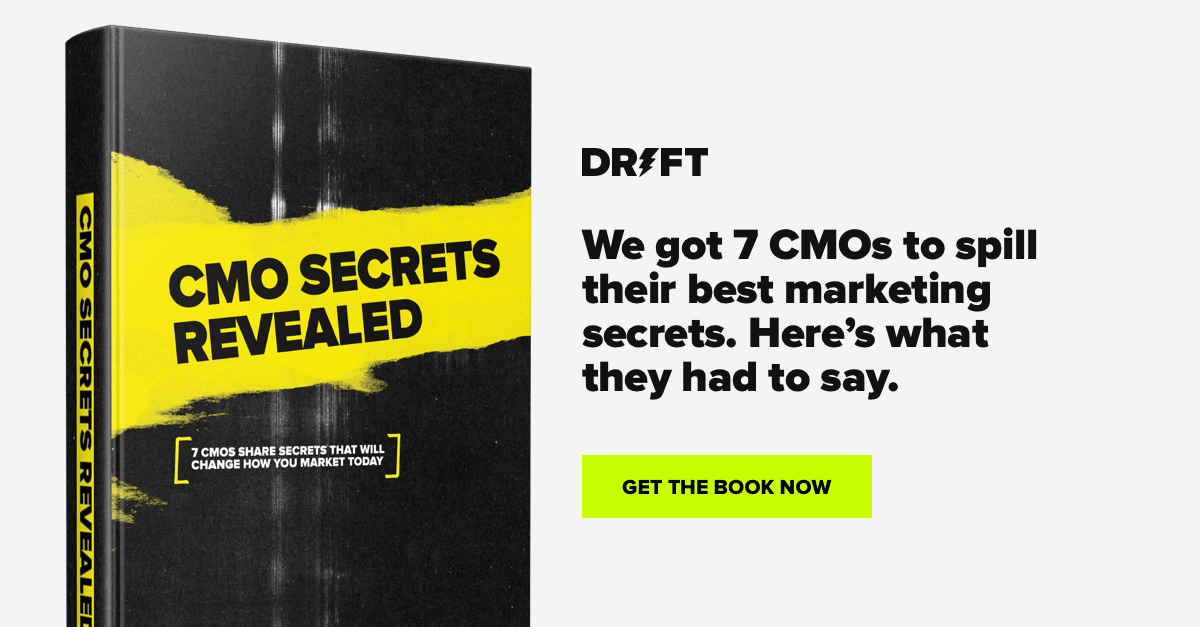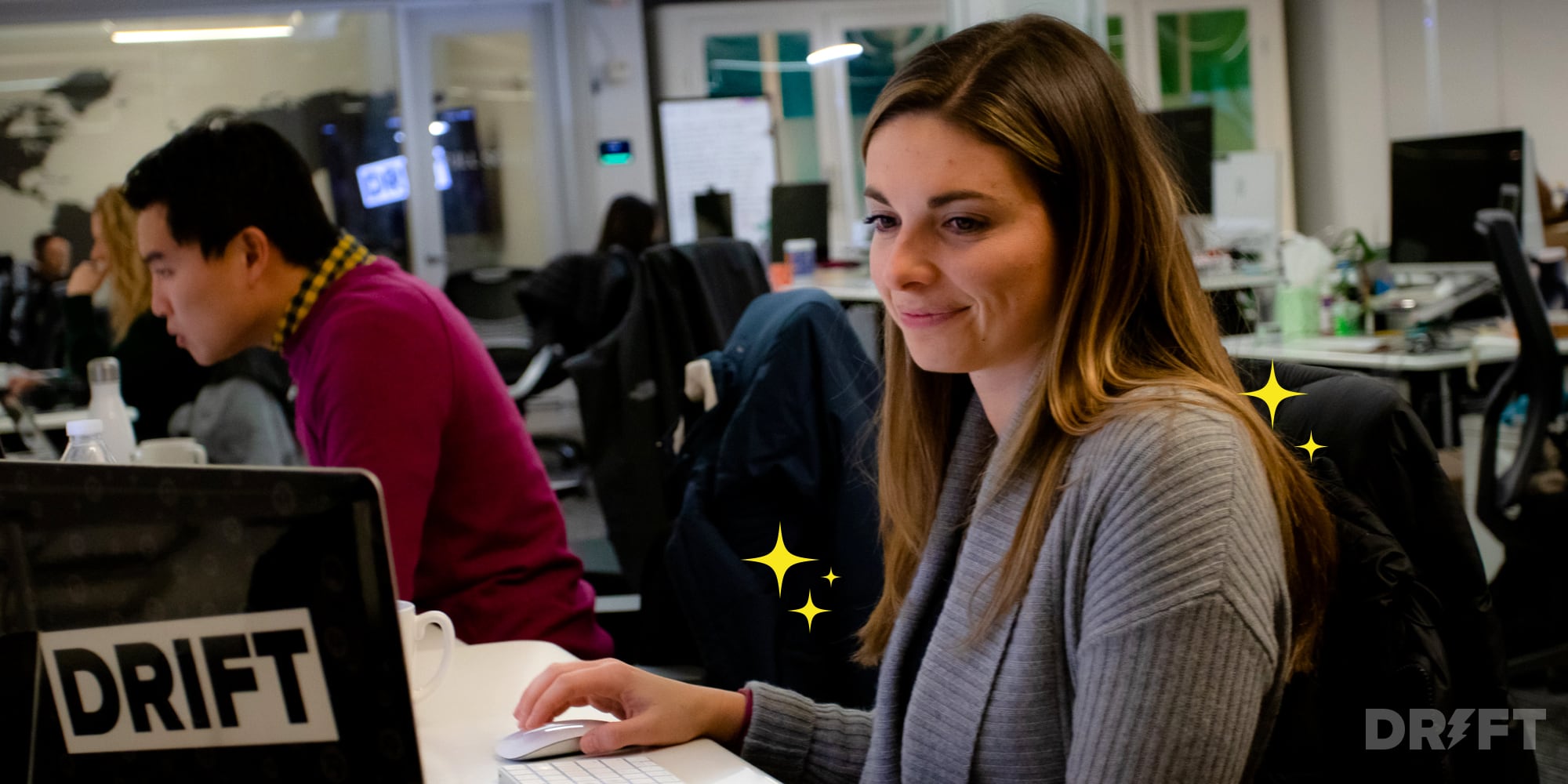What separates the winning companies from everyone else? Brand. If you ask Ryan Deiss, he’ll tell you it comes down to three things:
- The key to creating a compelling brand lies in building a character that resonates with your target audience.
- So how do you do that? Use a framework called Character Diamonds. Doing so allows you to map out the character that suits your brand.
- But the most important aspect in building a character that really resonates? Flaws. Make sure that whatever character you align with your brand or create to sell your story has a human element. Make them relatable. Give them a flaw.
Editor’s Note: The following transcript is from Ryan Deiss’s HYPERGROWTH presentation. It has been edited and condensed for clarity. You can watch Ryan’s full presentation here.
—
Good morning. My name is Ryan Deiss, I’m the co-founder and CEO of DigitalMarketer.com, and today I want to give you a framework for defining your brand if you’re just starting a company. And, if you’re with a legacy company, I want to give you a framework for recapturing some of that magic that was there and should be there because I’m telling you if you’re at a company that exists today there is some magic, there is some spark there that can absolutely be reclaimed.
So long story short we’re going to be talking about branding, but maybe branding in a way that you’ve never seen it before. I hope that by the time we’re done, you agree with me that this is really about more than branding.
So let’s get this thing started.
We’re going to start off by talking about character diamonds. Why is Apple loved more than Dell? What is it about Apple that makes people love Apple more than Dell? Now, I’m from Austin, Texas, I’m a resident, I went to school at the University of Texas at Austin. I was inspired to start my very first business from my college dorm room by Michael Dell because he had done the same thing literally in the dorm room across the street from where I was living at the time when I started my first company in 1999. So it pains me to say this, but that’s the reality, right? Apple is more loved than Dell.
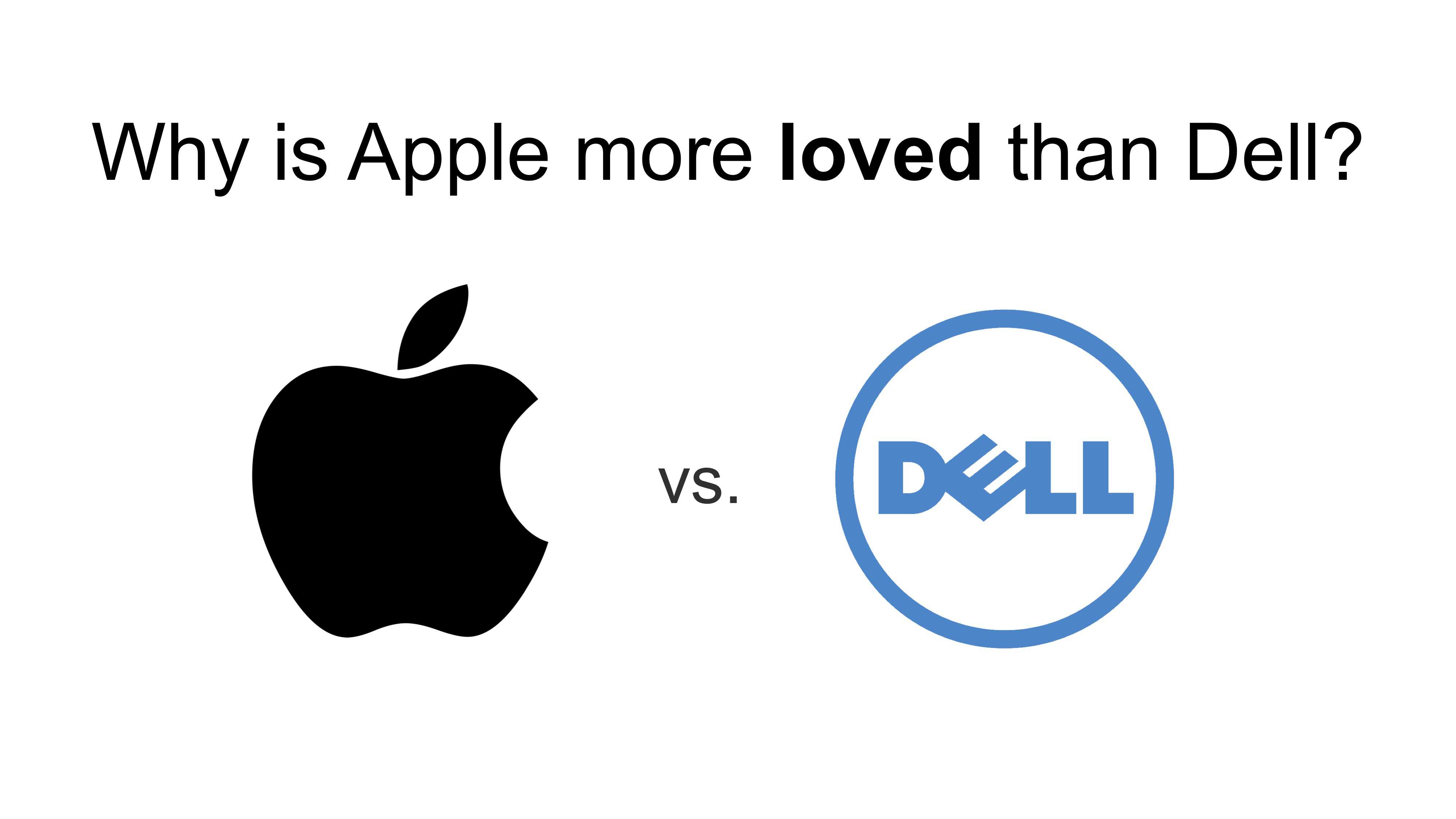
Similarly, how is Stan Lee able to beat DC Comics?

Now, if you’re not a comic book nerd like I am go back into the 1960s right, DC Comics, they were the king. They were the King Kong of all comics. They had Superman, they had Batman and then kind of out of nowhere comes Marvel Comics and some of these amazing characters like Spiderman and X-Men and they really kind of took over the scene. How does that happen? What can we learn from that?
And also why are these cows standing?
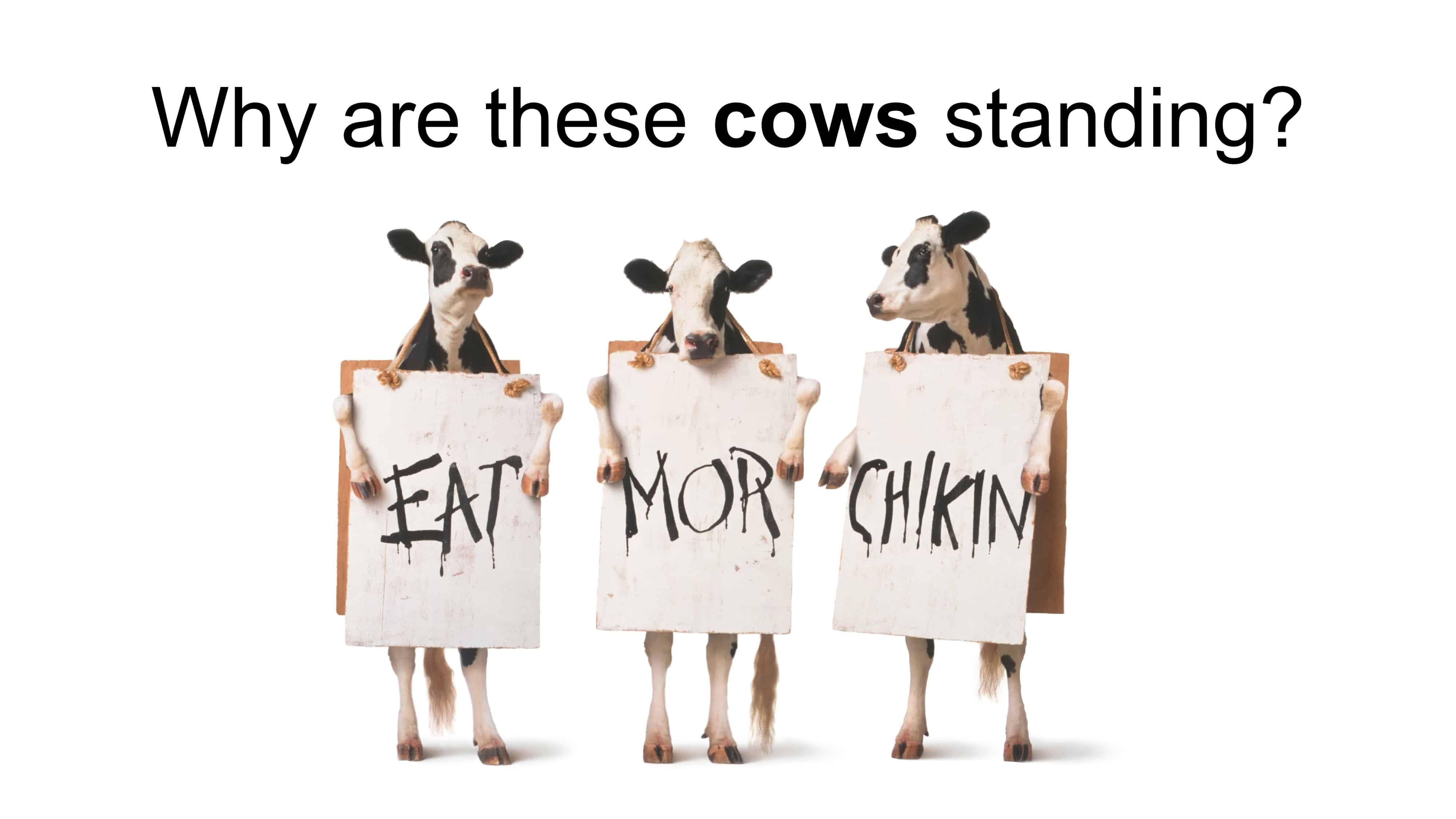
Why are these cows standing and how does a company that is only open six days a week sell more chicken than any other company on planet earth? There’s something that we can all learn there as well.
So we’re going to talk about branding and really I have to give credit where credit’s due. Our host, our illustrious host Mr. David Cancel, I love what he had to say about brand. He said, “Companies can no longer differentiate on features in a world of infinite supply. Brand. Brand is the only true marketing advantage.”
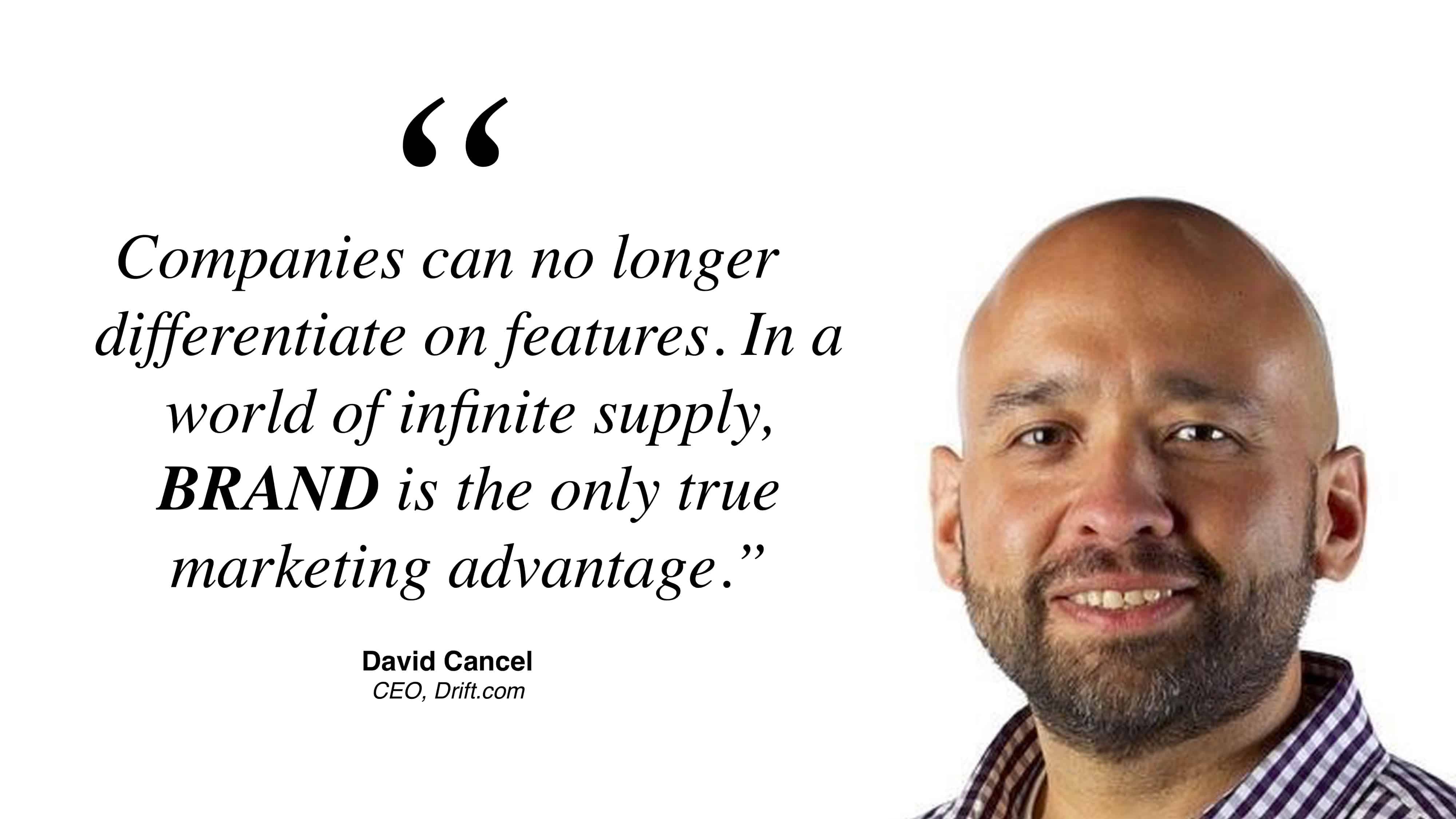
In a world of infinite supply, in a world where everyone can be a taxi driver. In a world where everyone can be a hotel. In a world where you can have almost anything in a matter of clicks, you want on your doorstep in a day or less. Brand is the true differentiator. It is the one advantage that we have.
So we’re beginning to agree that brand is important. Really for the first time in a long time, branding is once again cool. But what is branding? When we say branding, what do we mean by that? I love this quote from Jeff Bezos.
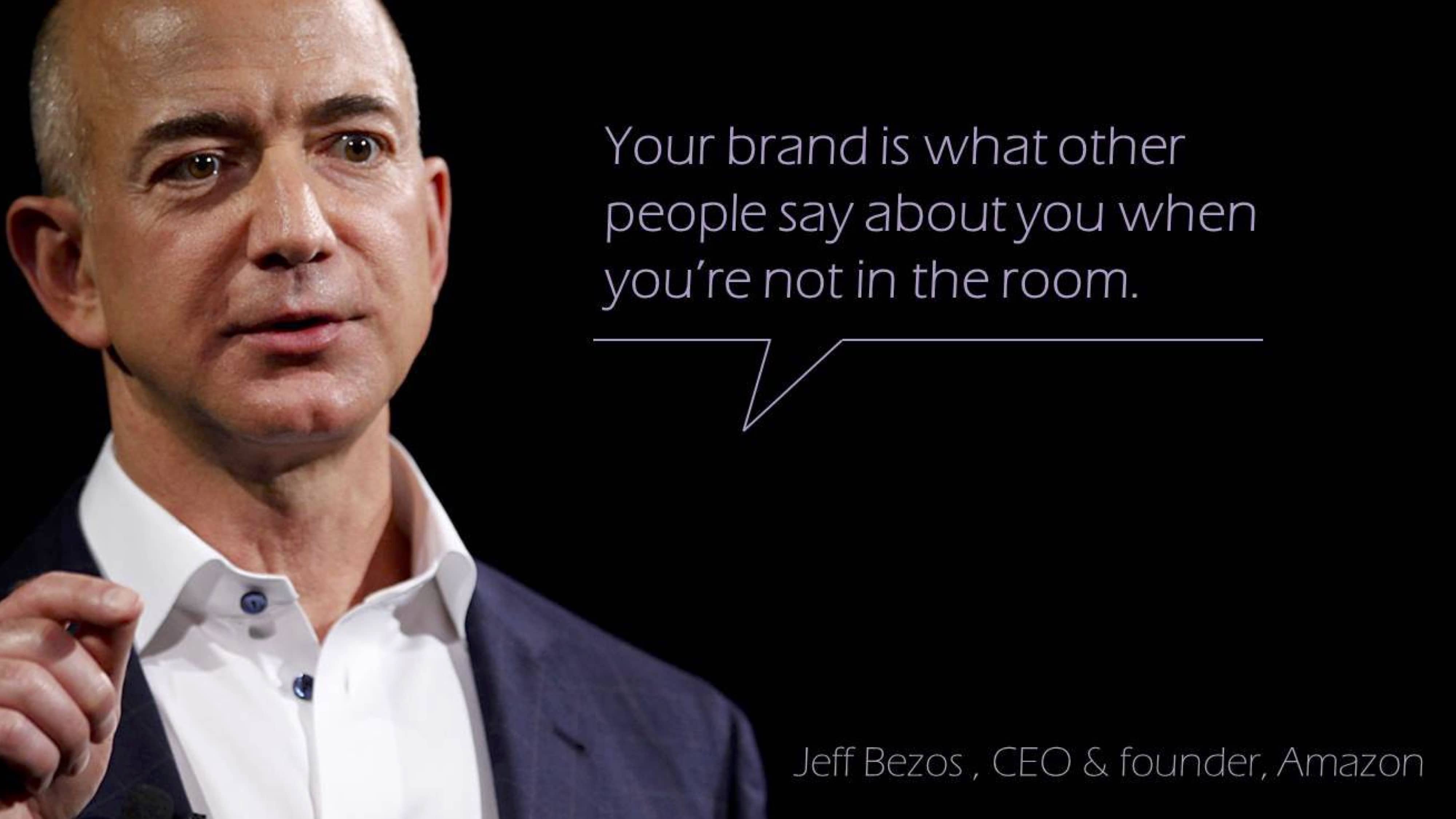
“Your brand is what other people say about you when you’re not in the room.” I love that quote. “Your brand is what other people say about you when you’re not in the room.” So if we can agree that branding is important, if we can agree on what branding is, that’s good. That’s a good start.
The Problem: How Do You Create a Brand
The problem is that nobody’s telling us how to do it. How do you, today, create a brand that is more than just a logo? How do you create a brand that isn’t just a soulless mass of people with a product to sell? How do you do that? That’s the kind of question I would like to address in the time we have today.
What I’m seeing happening a lot, kind of one end of the spectrum is this disease impacting a lot of startups and it’s the affliction known as guru-itis.
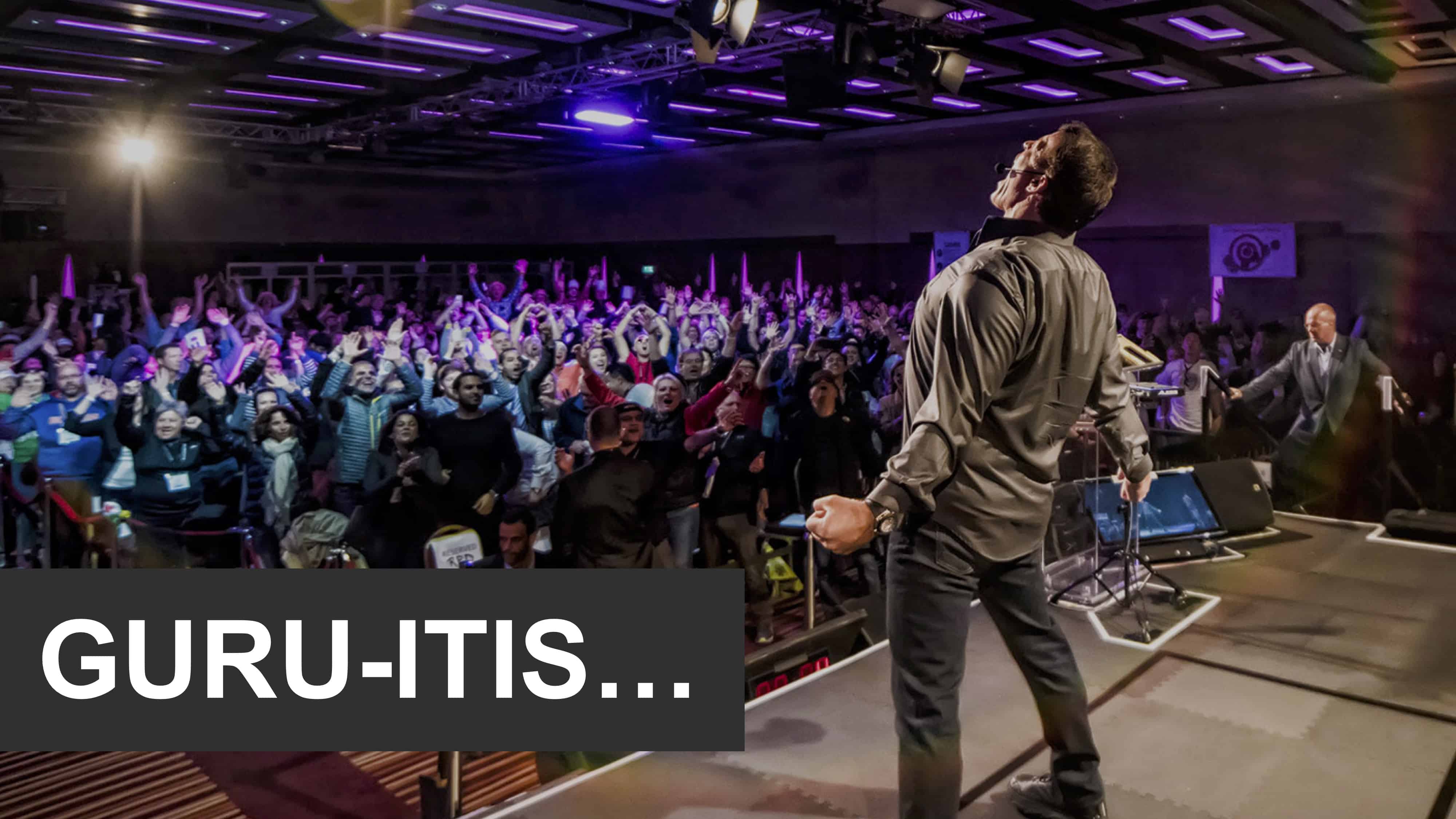
You’ve probably seen this. It usually starts with a founder. They do a post on Medium, it gets some traction and the next thing you know they think they’re the next Tony Robbins. They’re doing events, user conferences, they’re spreading out, having their people do fire walks and chants. And before too long you kind of forget what the heck the company does. It’s all about the founder, right?
So that extreme isn’t ideal. That extreme is not necessarily going to scale, that extreme is not going to place the value where it needs to be which is at the company level. But hey, nobody can deny that it has a soul. No one can deny that it’s at least interesting.
But if we’re going to acknowledge that that extreme isn’t ideal, we have to acknowledge that the alternative extreme isn’t ideal either. This video paints a clear picture why.
Okay, that’s adorable. But seriously what the heck? Why is Matthew McConaughey driving a Lincoln? Now don’t get me wrong, I love me some McConaughey, right? Another Austin guy. He’s basically the coolest person on planet earth. You know, a genie pops out of a bottle, you could have any wish, I want to be Matthew McConaughey. I don’t think it’s asking for too much. But does anybody really believe that? But why does it happen? Why do these big companies do things like this?
I submit to you that it’s because they have no soul. Because these big companies, because these big brands have no soul they have no choice but to co-opt the soul, the character of someone who does. And so they grasp hold of a McConaughey. And nine times out of 10 when companies hire celebrity spokespeople, that’s exactly what they’re doing. They’re saying, “Well, we have no soul, we have no personality, let’s borrow theirs for a little while.” And they wonder why it doesn’t work.
So that extreme doesn’t work either.
And this is where the whole branding paradox comes up.
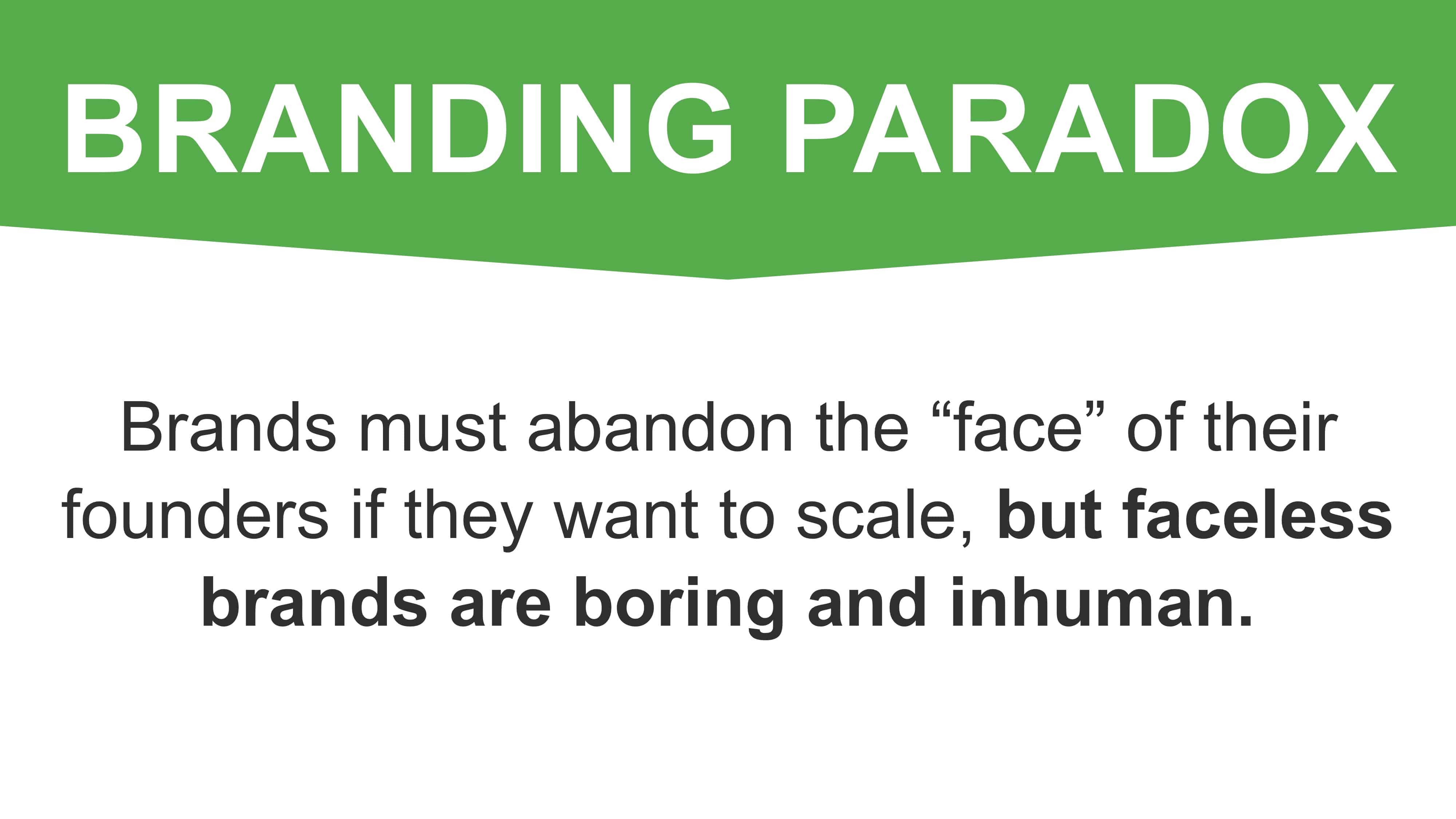
For a brand to truly scale it must abandon the face of its founder. Right? If a brand is going to scale it has to push aside the face of its founder and yet at the same time, faceless brands are boring and inhuman.
So how do we bridge this divide?
How do we stand in the center of these two seemingly irreconcilable ideas and squeeze them together? That’s what I want to offer you today.
Brands must be storytellers. Storytelling is the best marketing.
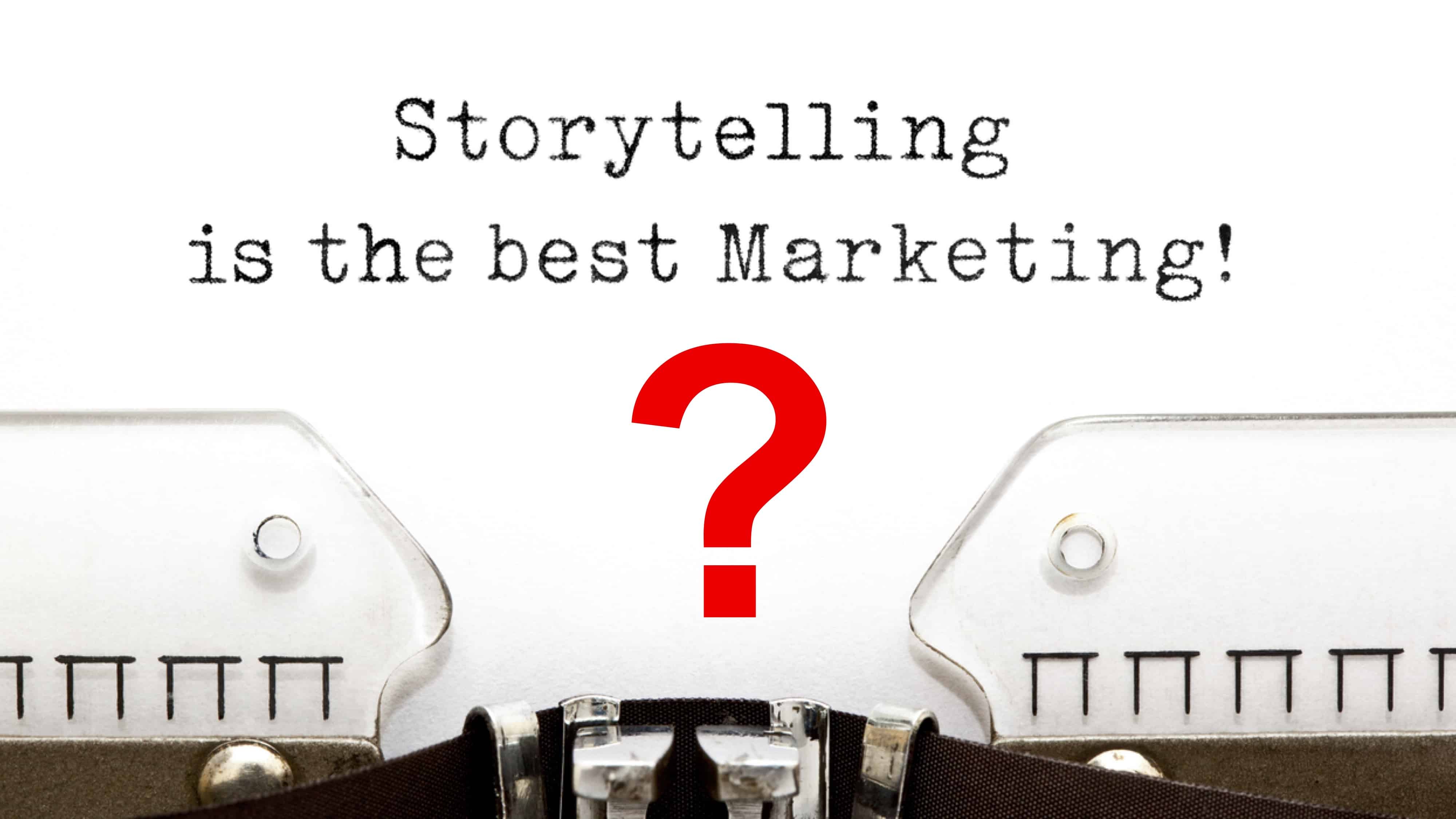
Now I don’t disagree with this statement, I think it’s a great start, but I think it’s incomplete.
So here’s a writer-downer for you. While humans love a good story, it’s characters that we crave.
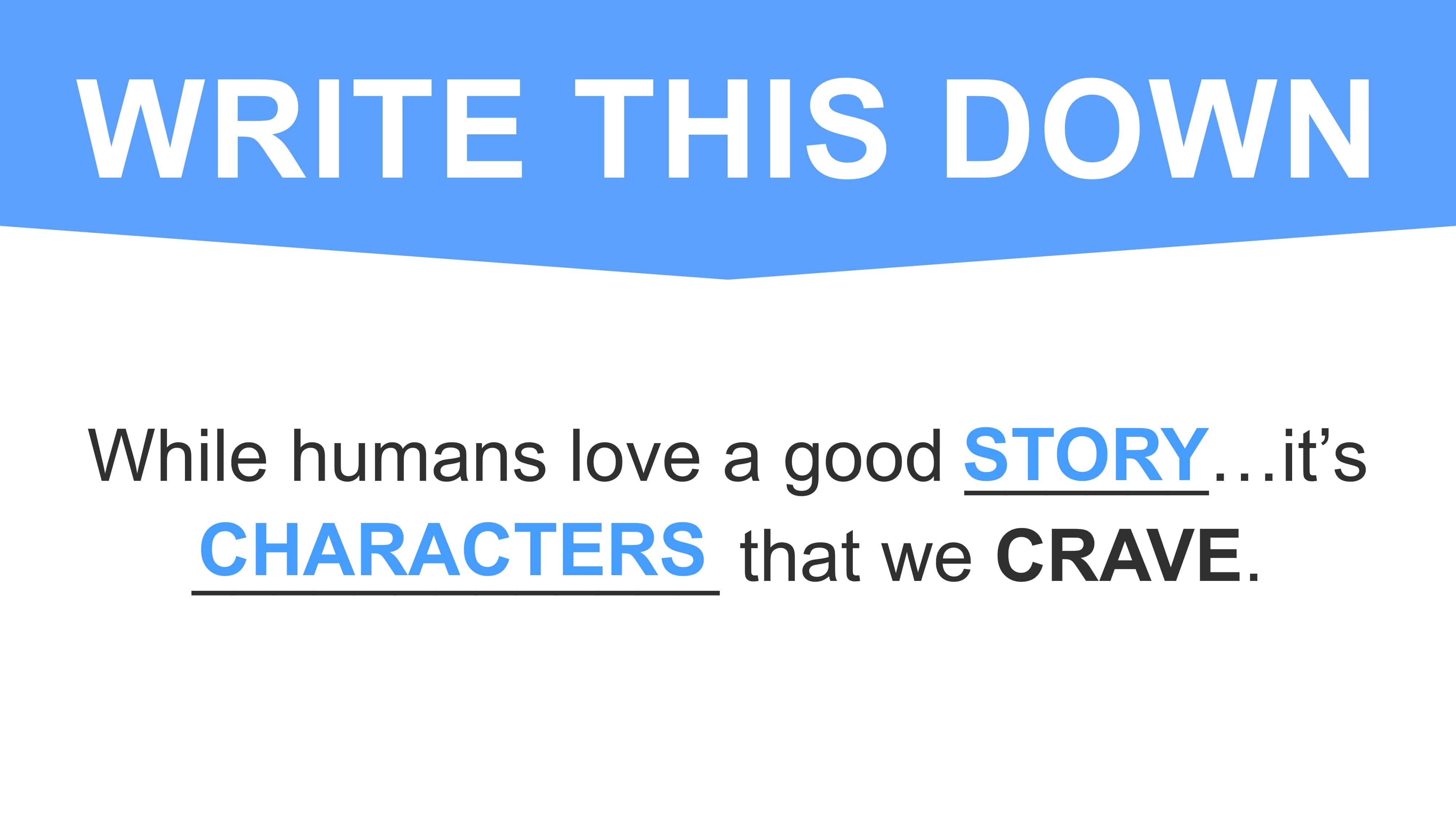
If you really think about it there have only been two or three stories in the history of human existence. What is the key differentiator? The characters. The stories don’t change. It’s all hero’s journey, it’s all two people falling in love. What is the differentiator? In a world of infinite supply, it’s the characters that make the difference.
You’ll recognize these characters, many of these characters you love, they might be some of your favorites.
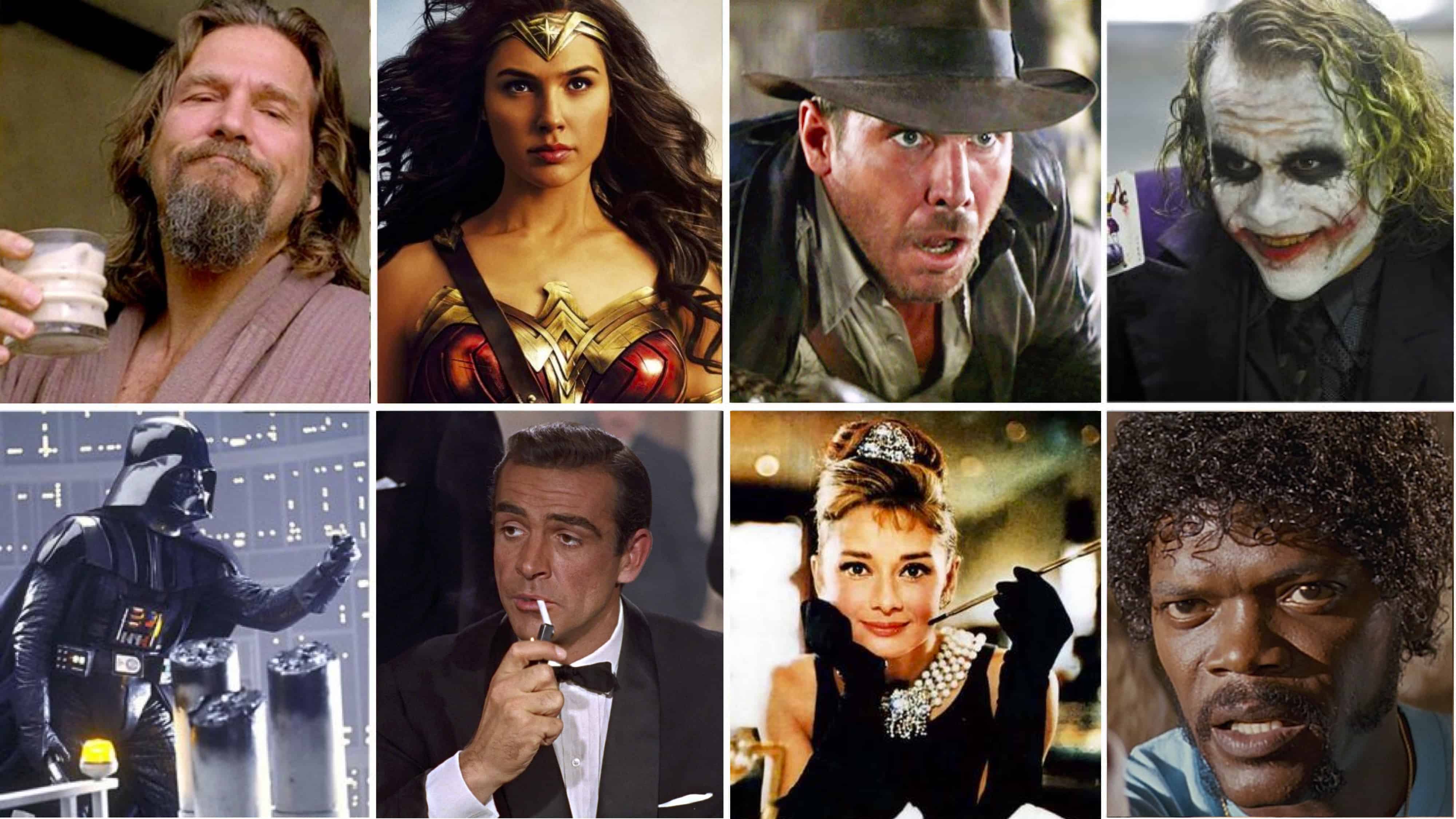
The funny thing is you’ve probably forgotten the plot line of many of the movies, but I bet you could quote some of your favorite lines from the characters. I bet you could make your voice sound like theirs. I bet you could walk like they walk, right?
It’s funny, Pixar and Disney, they’re known as storytelling brands. but the reality is all the stories are the same. At the end of the day, it’s the characters that we remember. It’s the characters that we latch on to.
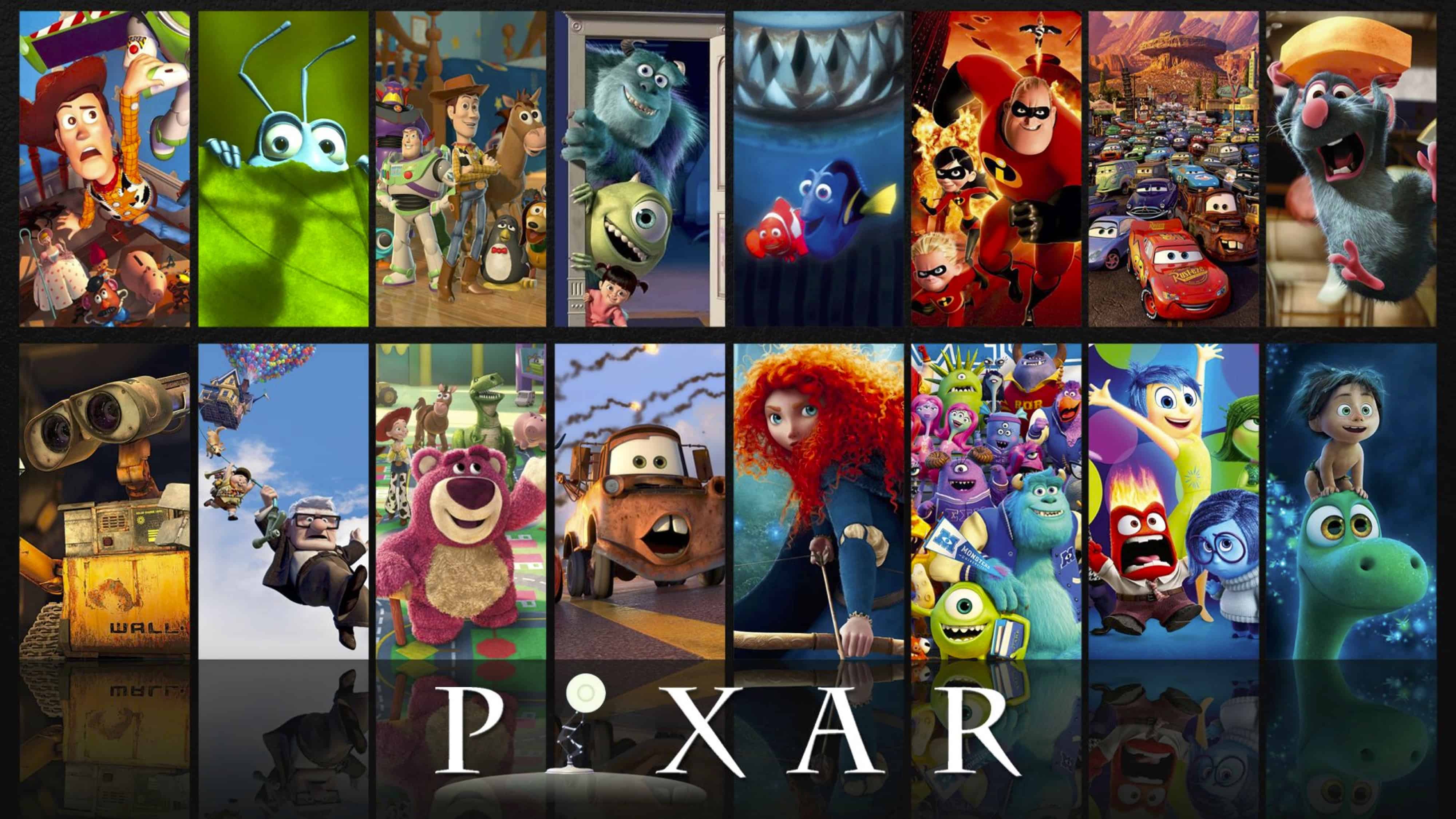
A brand is not a logo. A brand is not your style guide. These are things that we do for the sake of consistency. I’m not saying that they aren’t important, I’m just saying they are not brand. A brand is a fictional character.
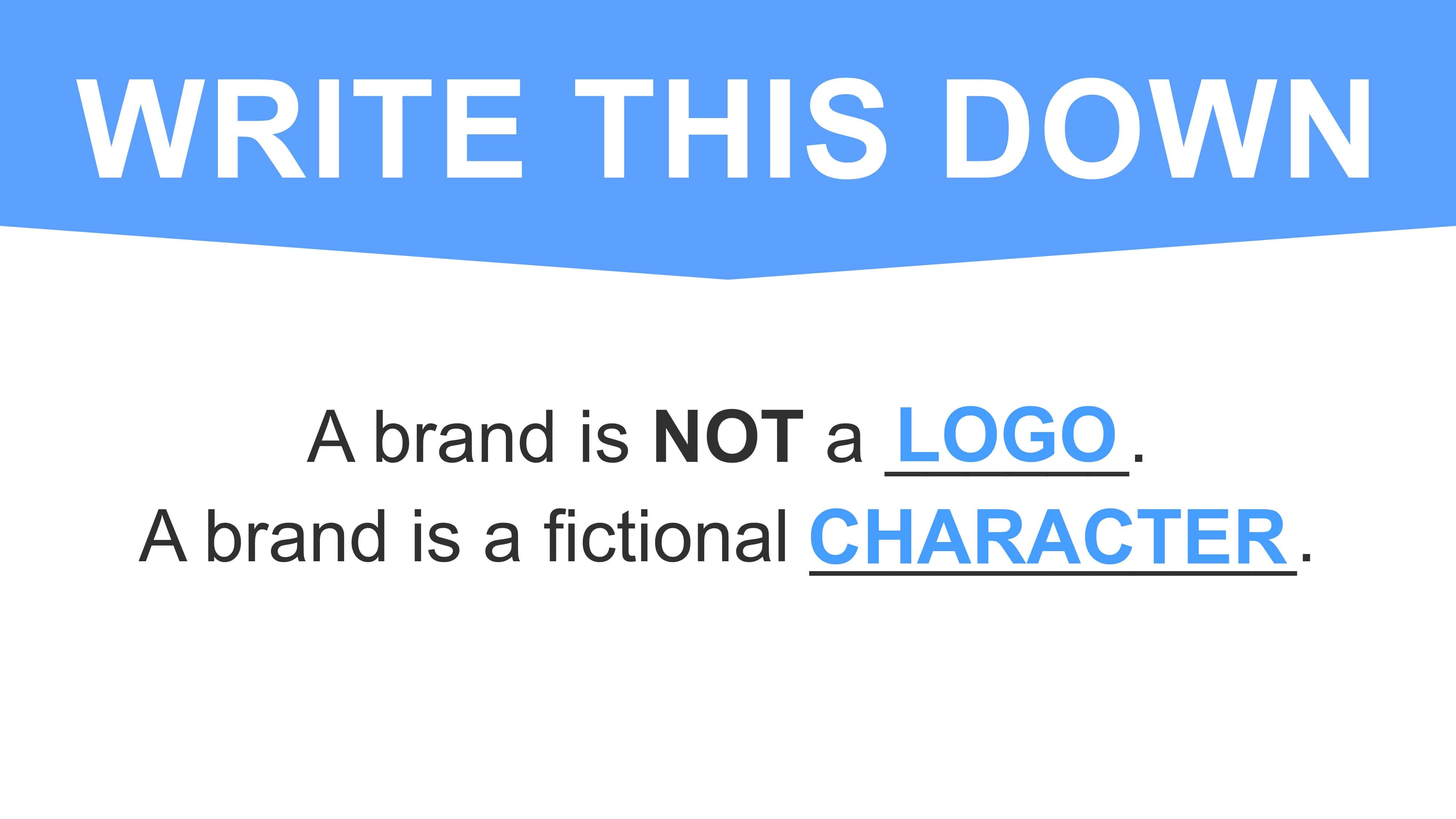
Branding is important, branding is character creation, we have to ask ourselves then, how are characters made? How do characters come into existence? And the beautiful thing is this is not a new idea. This is not a new concept. We as marketers, as founders, don’t have to wonder because others have already figured it out.
Do we have any screenwriters in the room, anybody go to college to learn screenwriting or fiction writing? I will tell you this, I wish more marketers took screenwriting classes. I love studying the great copywriters. Where you want to go next is screenwriting. Get good at writing dialogue. Get good at creating characters. If you did take a screenwriting class, there’s a really good chance that you were taught this concept of a character diamond.
Character Diamonds
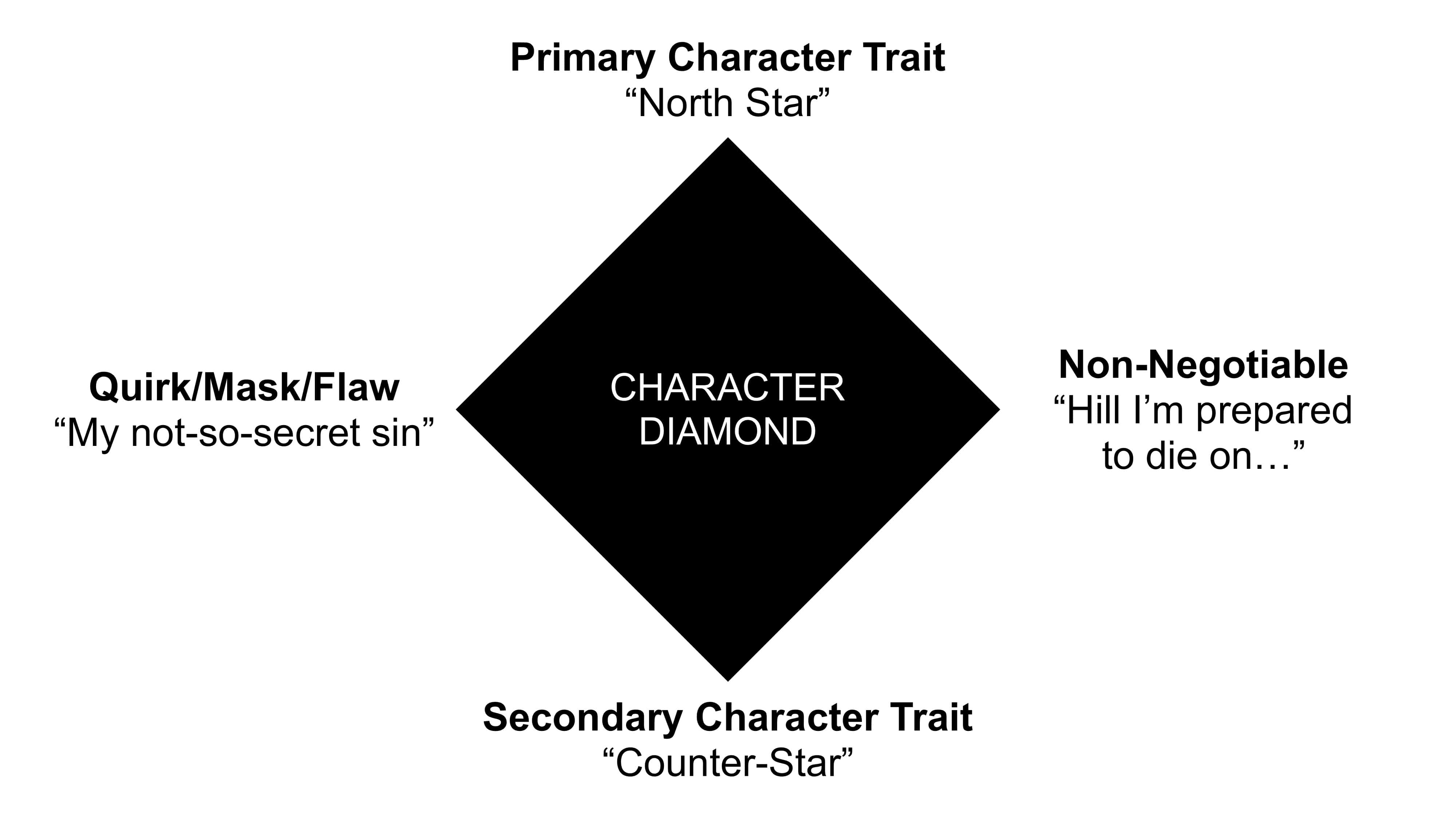
Character diamonds are how fictional characters are created. They are plotted in a diamond-like the one you see here. I’m mega-simplifying it, but what we mean by north star is this is the most obvious and visible character trait. This is your brand’s mutant power. So if it’s Superman, it’s a man of steel – flies around, laser beams out of the eyeballs, bullets bouncing off. If it’s Spiderman it’s web-slinging.
Let’s think about another interesting character. Sherlock Holmes. Sherlock Holmes is a genius. He’s a savant. Right?
You shouldn’t have to think about it very hard, what is your brand’s most obvious mutant power? As we’re plotting the character diamond remember north and south are external. When we get to the east and west axes, that’s internal. We’ll come back to that…
Now we need to balance the north star with a counter star. This is a secondary character trait that balances out the primary. So what is Superman’s counter star? Kryptonite. You have a mutant power, you have kryptonite. Who was Spiderman, actually? A teenage boy. A scared little teenage boy. That character incidentally comes up a lot. Harry Potter? A wizard who’s a child. We start to see these characters repeat again and again and again. There’s a lesson there.
When we think of Sherlock Holmes. A savant-like genius? Kind of an asshole. Right? But it sort of balances out. It makes it interesting. What we’re looking for is conflict. We’re looking for contrast at the poles. That’s what builds interest. Contrast, conflict – that’s what creates interest.
Now what we need to plot is your non-negotiable. People will not trust you until they know what you believe. People will not trust your brand until they know where your brand stands. Where do you stand on particular items? You probably have friends who disagree with you and you disagree with them vehemently over different matters. It could be politically, it could religiously. And yet still you’re friends. We can be friends with people we disagree with, we just want them to be consistent.
So what is the hill that your brand is prepared to die on? For Superman, truth, justice, and the American way. For Spiderman, protection of the innocent. For Sherlock Holmes, the puzzle must be solved. It’s not about justice, it’s about solving the puzzle.
Any of you watch the TV show House? You realize that’s just Sherlock Holmes in a hospital, right? They weren’t even trying to hide it. House, Holmes, Wilson, Watson, same characters. This happens again and again and again. Winning characters re-emerge in different scenes again and again and again. Watch for it. There are only so many characters just like there are only so many stories.
Now here’s the biggie though. This is the one that most people mess up. You got a mutant power, you got kryptonite, you’ve not a non-negotiable, a hill you’re prepared to die on. But where most people fail is figuring out the quirk. What’s your mask, your weakness, your flaw? After all, the things that make us human are not our exceptional traits. It’s our flaws that make us human.
How did Stan Lee come out of nowhere to beat DC Comics? He created characters that were human. Spiderman harbored incredible intense guilt over the death of his uncle because he let the bad guy get away. Right?
Now the funny thing is, Superman, prior to about the 1970s, 1980s didn’t really have a weakness. The only thing he had was kryptonite. But any of you who are fans who are old enough to have watched the Christopher Reeves version that came out in the ’80s, what was Superman’s quirk, weakness, flaw? You know what it was? He was bad with women. They just made him kind of a nerd. That was his weakness or flaw, that was what made him human. That’s Clark Kent. He was just kind of derpy, right? That didn’t show up until screenwriters got their hands on the character.
What happened with Batman in the newer Dark Knight movies? All of a sudden he’s this kind of psycho vigilante where you’re questioning his motives. That was new. That’s because DC learned a thing or two from Stan Lee.
I asked before if we had any Sherlock Holmes fans, a bunch of hands went up. What’s Sherlock Holmes’s weakness, mask, flaw? When he wasn’t solving a case, where could he be found? In the opium dens. And if you look at the modern Sherlock Holmes, he’s on different methamphetamines. If you look at House he’s on prescription pills. Sherlock Holmes is always a drug addict. You take the drugs away from Sherlock Holmes and he’s just kind of a jerk. We don’t like him. We don’t want him to win. We don’t root for that Sherlock Holmes.
What is your weakness, mask, flaw?
I’ll show you how we do this at my own company. This is us at Digital Marketer.
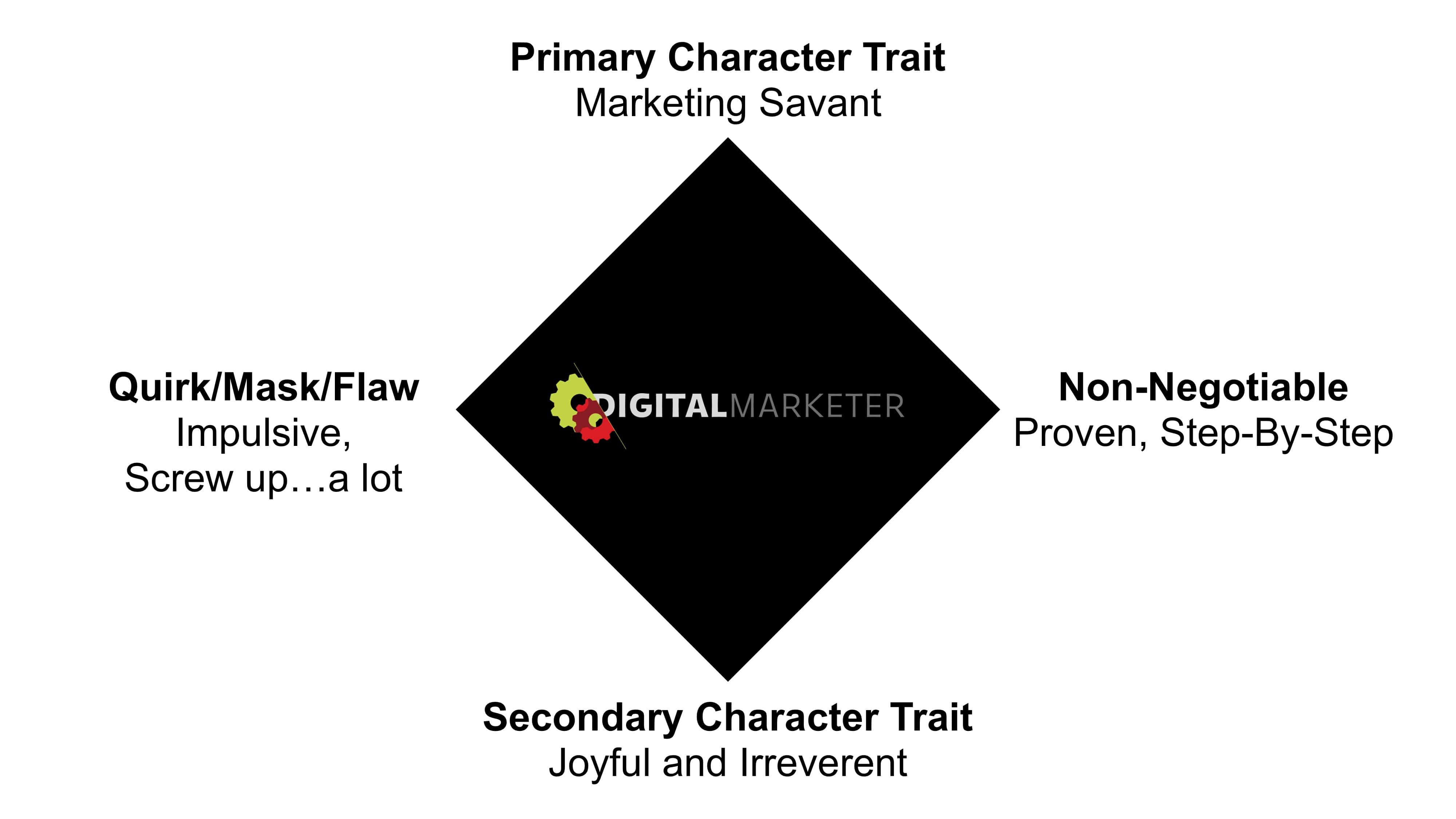
So what is our primary character trait? We’re marketing savants. We’re really good at this marketing stuff. But that’s not enough. You see, it used to be that at Digital Marketer we’d always publish our split test results. We’d always publish our data. But when we decided, no, no, no, we’re savants, we stopped doing that. It doesn’t mean that we stopped testing. We still test all the time. But savants don’t show their work. Savants don’t justify their position with data. They say it, they declare it, it simply is. You can agree with them or not, they don’t care.
You can see how this frame of mind begins to alter every little decision that we’re going to make. We need character consistency throughout the plot line that is your company’s development.
What about the counter-star? Unlike the brooding savant of Sherlock Holmes, we’re joyful, we’re irreverent. We’re kind of the idiot savant. And we are. You can probably tell. Right? If you’re around me anytime you’re like, “That guy’s kind of a dork.” You’d be right. That’s our whole company. We’re all kind of goofy, right? We’re irreverent. We’re having fun, we’re childlike.
What’s the hill we’re prepared to die on? It must be proven, it must be step by step. At Digital Marketer we do not publish theories. We do not say, “Well, we think that this might work.” We also never break news. Facebook can come out with a completely new ad format, you will not read about it first on the Digital Marketer blog. We’ll let somebody else do that. We’ll be a week, two weeks later saying, “Yeah, yeah, remember that thing that came out? Here’s how you actually do that. Here’s how you take advantage of it.” It must be proven, must be step by step, we abhor theory, alright? We say theory is for posers.
And our flaw is frankly we’re a bunch of screw-ups. We make a lot of mistakes. Now it used to be we would hide our mistakes. The reality is if you’re any good at marketing you can be right 30, 40 percent of the time if you’re amazing. You know what that means? That means you’re wrong 60, 70 percent of the time. We talk about that. Our subscribers learn more from our mistakes than they do from our wins. They appreciate it more. They say, “Wow, you just seem so down to earth.” What they’re really saying when they say we’re ‘down to earth?’ We’re human. That’s us. That’s all of us. We’re down on the earth. Not floating around up there. We’re not angelic beings. “You just seem so down to earth.”
So after you plot say, “What characters from books, film, does this kind of match?” So if I were to say you got a savant-like character who’s joyful and irreverent, very regimented, very step by step who also makes a lot of mistakes. Does that bring to mind any characters from film you can think of? I mean narrow it down…film in the ’90s. Come on. Can anybody think of a film that had a character like this?
Digital Marketer is Forrest Gump.

Digital Marketer is Forrest Gump. Yes, we’re savants, but we’re also the jokers. We’re silly, we’re joyful, we’re having fun. And we’re very regimented. Gump, why did you put that weapon together so quickly, because you told me to, Drill Sargent. Right?
Who is your brand’s character?
Now, why does this matter? This is the key to scaling without soul. If anyone from Dell is watching, it is not too late. But if you want to know why Apple succeeded where Dell did not it’s because the character of Steve Jobs was infused into that brand such that it was able to live beyond him and if Apple fails and flounders it will be because they forgot that. It’ll be because they lost that magic. But it’s there. Incidentally, Steve Jobs, if you want to plot a character on there, kind of little bit Sherlock Holmes-y. What’s their flaw? They’re kinda jerk faces. Right? Perfectionists to the point of kind of pissing everybody off, right? But it’s there and we love them for it. But Dell, it’s not too late.
This is also the key to standing out in a world of infinite supply. Nobody’s writing new stories anymore. The stories have all been written. The only thing that’s ever being produced now is new characters.
What about your business? What’s the new character that is going to be your brand? It’s also how you engender loyalty and I mean real loyalty. If you have children and you’ve taken those children to Disney World, you’ve seen how quickly they will leave you in the dust to go and hug a princess. I remember watching my girls like, “Yay, we’re at Disney World.” And they see Cinderella and they’re like, “Ah!” I’m sitting there like, “I wish they loved me like that.”
Characters have that effect on us. You want to build real loyalty, create a character. Now there are only two ways to screw this up. The first way is to not do it at all, the second way is to be wishy-washy on the weakness part and I will tell you your customers won’t trust you until they know who you are, warts and all. If you want to mess this up, act like you’re perfect. If you want to mess this up pretend like you’re bigger than your customers. If you want to mess this up, forget that you’re a human being.
So now it’s your turn. Plot your brand’s character diamond.
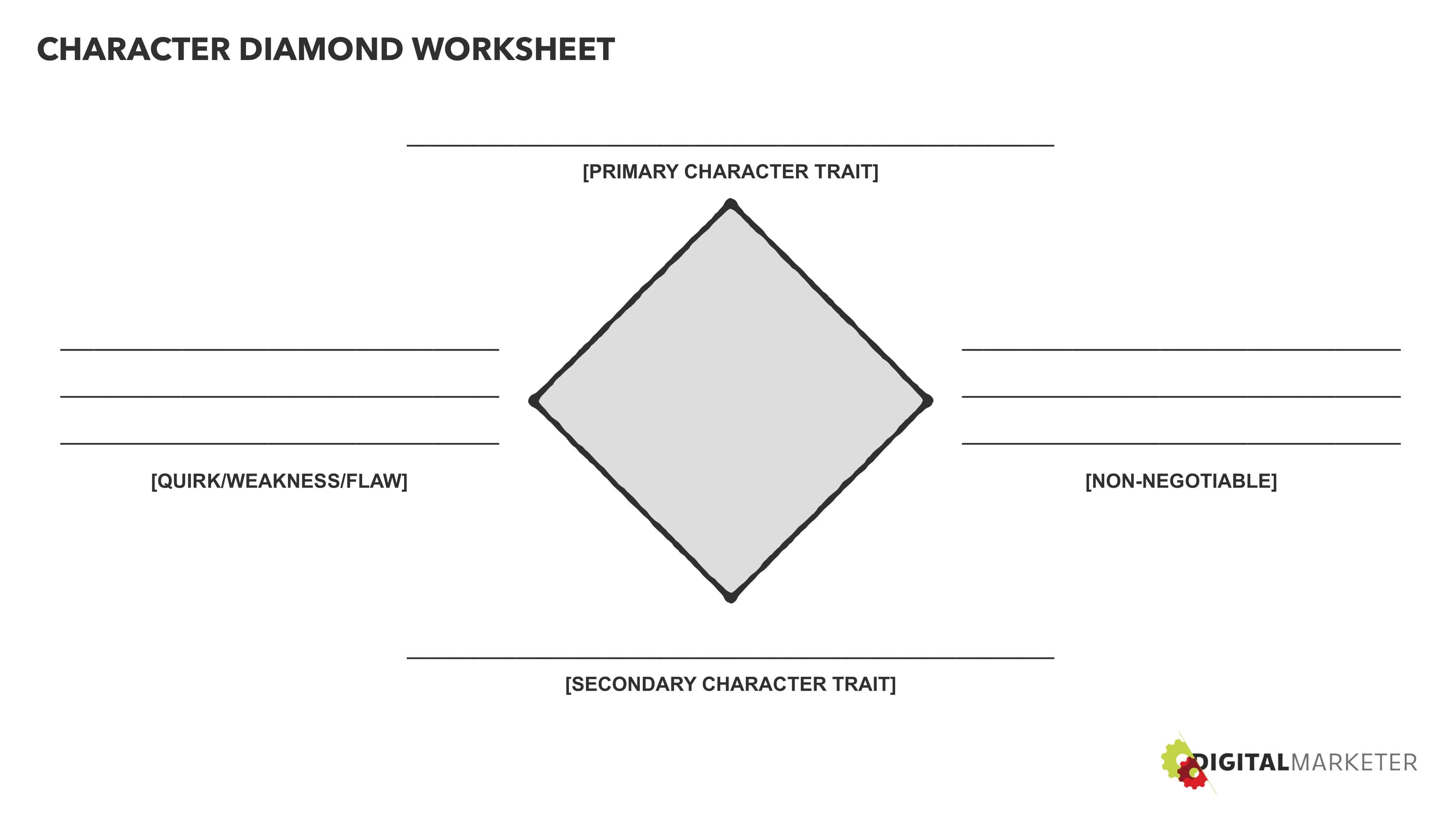
—
You can connect with Ryan Deiss on LinkedIn here. Want more? You can download Ryan’s HYPERGROWTH deck here.
Editor’s Note: This article was published in November 2018 and has been updated to reflect new information.





